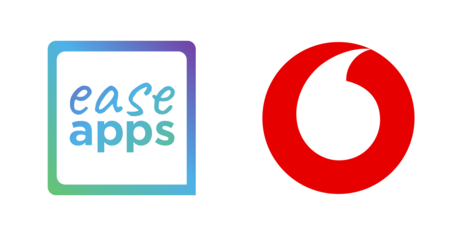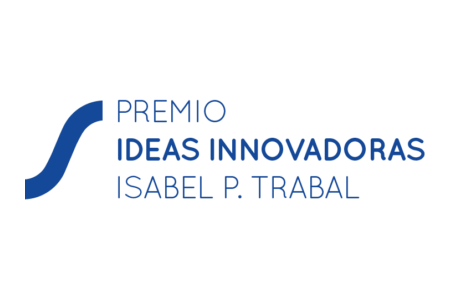In a previous post, we wrote about how the Digital Explorers with Ease Apps project allowed us to improve the Ease Apps applications. In the current post, we dig deeper into this project and we explain more details about the participants, the tests and the results obtained.
The Digital Explorers project was carried out between October 2018 and June 2019. During these eight months we have experimented, tested and, ultimately, explored whether the applications that are part of Ease Apps (Ease Touch, Ease Mouse and Ease Joypad) are really useful to facilitate or to allow access to an Android mobile device.
This process has also helped us to understand how our applications are actually being used, what difficulties our users encounter and how to improve them to better suit the real needs of people. Some people call this user-centered design.
Participants
For this project we recruited volunteers who were not able or had difficulties to use a mobile device in a conventional way. Finally, 9 people participated, 2 of them with Parkinson’s and 7 with cerebral palsy. Let’s get to know them a little bit:
- Luis and Paco. Both with Parkinson’s and having a hard time when trying to use their smartphone due to tremors caused by this disease. We offered Ease Touch.
- Josep Lluís and Gemma. Children who attend a special education school and with severe motor impairments in their upper limbs due to their cerebral palsy. We suggested Ease Touch.
- David and Amal. Both with cerebral palsy and who already used a joystick mouse to access the computer. Ease Mouse was our suggestion.
- Mariel. With ataxia and for whom touchscreen-based devices had been discarded after many unsuccessful attempts. We proposed Ease Touch.
- Mabel. With cerebral palsy, she was already a user of a scanning system operated through two switches she activated with her legs. We offered Ease Joypad.
- Rubén. Also with cerebral palsy and who already used a keyguard and a joystick to access his personal computer.
Tests
The volunteers were asked to participate in two types of tests:
- Structured test. Each user was asked to perform some tasks with his/her mobile device and, to do so, he/she could rely on the support of one of our apps. During the test, we remained watching carefully, taking notes and inviting the participant to say out loud what was thinking on. In the discipline of the Human-Computer Interaction (HCI) this technique is known as thinking aloud.
- Free use test. Once the structured tests were completed and some important usability problems were fixed (there were some), we asked each user to install the application on his/her mobile device and use it whenever he/she needed it. After few weeks we returned to interview the user and other close people.
Results
The results were very positive. As we already explained, thanks to these tests we were able to add essential improvements to the different applications of Ease Apps. But what we probably did not expect to happen is that most of the participants end up adopting these tools almost immediately.
Below we summarize which were the benefits for the participants. In other posts, we will provide more in-depth reports of some cases.
- For Rubén, after trying with Ease Touch and given his dexterity with joysticks, their caregivers and his family decided to use a joystick attached to his wheelchair (BJ Ring) and Ease Mouse. He currently uses his personal smartphone with great precision to access WhatsApp, Facebook, and Instagram, make voice calls, etc.
- Both Amal and David use Ease Mouse for the most common mobile functions such as instant messaging, social networks, games, etc.
- Mabel improved her skills controlling her smartphone —which she already uses autonomously— with the switches that she press with her legs.
- For Luis and Paco, since they started using Ease Touch they use their smartphone daily to access the Internet, play games or send WhatsApps. Before that, they both hardly used their phones to make calls. They find Ease Touch especially useful when using the on-screen keyboard. Luis told us that now he feels more secure using his phone.
- Thanks to the help of Ease Touch and to the intensive practice, Mariel has gone from previous frustrating experiences to using her smartphone without even needing Ease Touch that keeps it minimized most of the time. Ease Touch has given her the peace of mind she requires to use her smartphone.
- Finally, Josep Lluís and Gemma were not able to complete the tasks proposed by their tutor. Before that, they must overcome many other difficulties and acquire other skills that are necessary to manage a mobile device, even to perform very simple tasks. Both their tutor and their respective families have agreed to continue working, aware of the enormous potential of mobile technologies. If they need it in the future, Ease Touch will be at their disposal.
Conclusions
Without a doubt, the Digital Explorers project has been a resounding success. In addition to the technical improvements that we have already implemented into the different applications of Ease Apps, several people have decided to adopt these tools to improve the accessibility of their smartphones. We could not be more satisfied!
This exploration has allowed us to give an initial boost to Ease Apps, but the work does not end here. Our goal is to continue observing, listening, developing and involving those people who require a different way to use their mobile devices.




